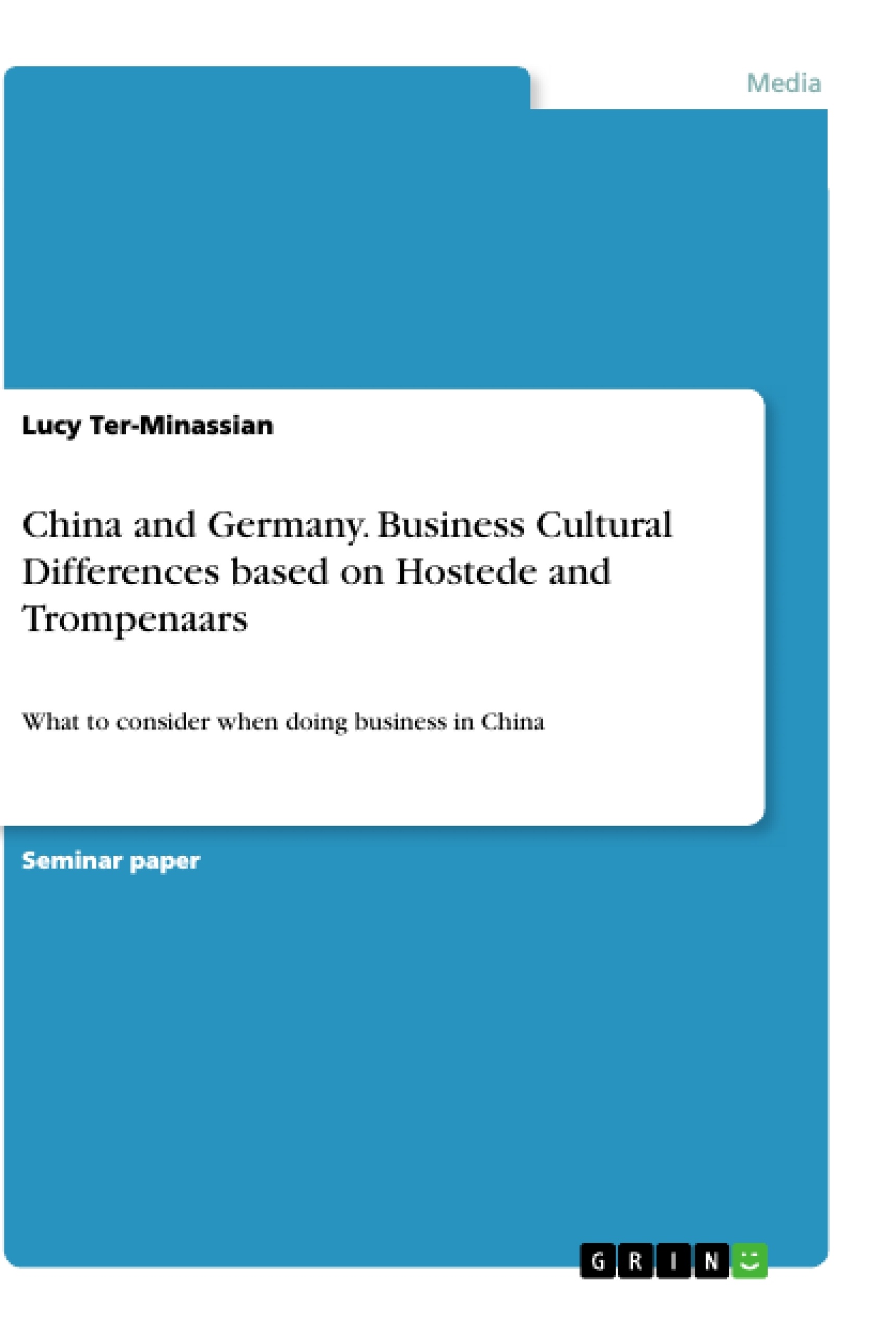The following work aims to highlight cultural differences between Germany and China and their relevance for international relations. It will also give recommendations for business negotiations between German and Chinese parties. After this introduction a definition of culture follows and the reader is introduced to two different models that help develop an understanding of cultural differences. The first one is the model of cultural dimensions by Geert Hofstede, the second one is the model of cultural dimensions by Fons Trompenaars.
Inhaltsverzeichnis (Table of Contents)
- Introduction
- What is culture?
- Cultural dimensions by Geert Hofstede
- Power Distance
- Individualism
- Masculinity
- Uncertainty avoidance
- Long-Term Orientation
- Indulgence
- Cultural dimensions by Fons Trompenaars
- universalism vs. particularism
- individualism vs. communitarian
- affective vs. neutral
- specific vs. diffuse / high context vs. low context
- achieved vs. ascribed
- sequential vs. synchronic
- Internal direction vs. outer direction
- Conclusion
Zielsetzung und Themenschwerpunkte (Objectives and Key Themes)
This paper aims to examine the cultural differences between Germany and China, emphasizing their significance for international business relations. It provides recommendations for successful negotiations between German and Chinese parties. The paper explores the concept of culture, introducing two prominent models – Hofstede's and Trompenaars' cultural dimensions – to understand cultural differences.
- Cultural dimensions and their impact on business negotiations
- Importance of understanding cultural differences for successful business relationships
- Recommendations for navigating cultural differences in business interactions
- Comparison of cultural values and practices between Germany and China
- Impact of cultural differences on communication and decision-making in a business context
Zusammenfassung der Kapitel (Chapter Summaries)
- Introduction: This section provides a brief overview of globalization and its impact on business relationships, highlighting the growing importance of understanding Chinese culture and its influence on the global economy. It emphasizes the necessity of considering cultural differences to avoid potential misunderstandings and ensure successful business ventures in China.
- What is culture?: This chapter explores the multifaceted concept of culture, discussing various definitions and emphasizing the importance of understanding culture as a learned behavior shaped by social environment. It differentiates between "culture 1" and "culture 2" according to Hofstede's perspective.
- Cultural dimensions by Geert Hofstede: This section introduces Hofstede's model of cultural dimensions, highlighting its significance in identifying and classifying national cultural differences. It explores the four original dimensions: power distance, individualism vs. collectivism, masculinity vs. femininity, and uncertainty avoidance, emphasizing their relevance in understanding cultural dynamics and navigating business relationships across cultures.
- Cultural dimensions by Fons Trompenaars: This chapter presents Trompenaars' model of cultural dimensions, exploring how it complements Hofstede's approach. It focuses on dimensions such as universalism vs. particularism, individualism vs. communitarianism, affective vs. neutral, specific vs. diffuse, achieved vs. ascribed, sequential vs. synchronic, and internal direction vs. outer direction.
Schlüsselwörter (Keywords)
The core concepts of this paper revolve around cultural dimensions, intercultural communication, business negotiations, cultural differences, international business relations, Germany, China, Hofstede, Trompenaars, and the importance of cultural awareness in a globalized business environment.
- Quote paper
- Lucy Ter-Minassian (Author), 2019, China and Germany. Business Cultural Differences based on Hostede and Trompenaars, Munich, GRIN Verlag, https://www.grin.com/document/490583




